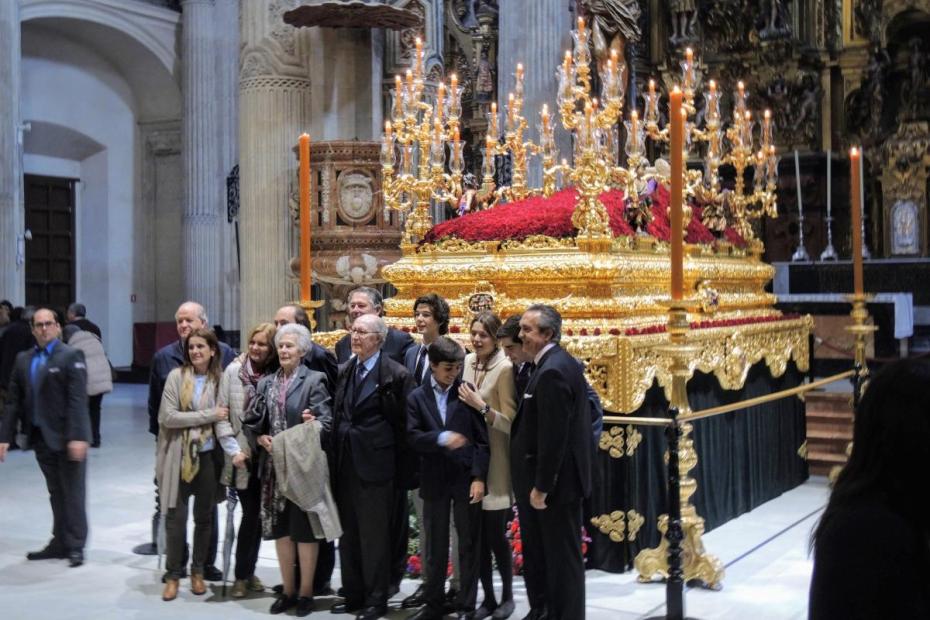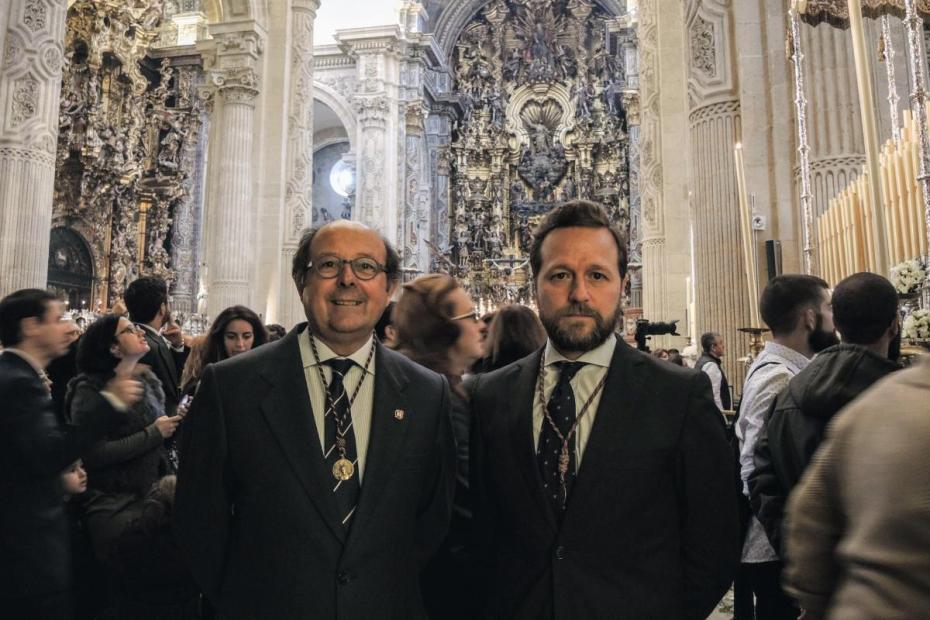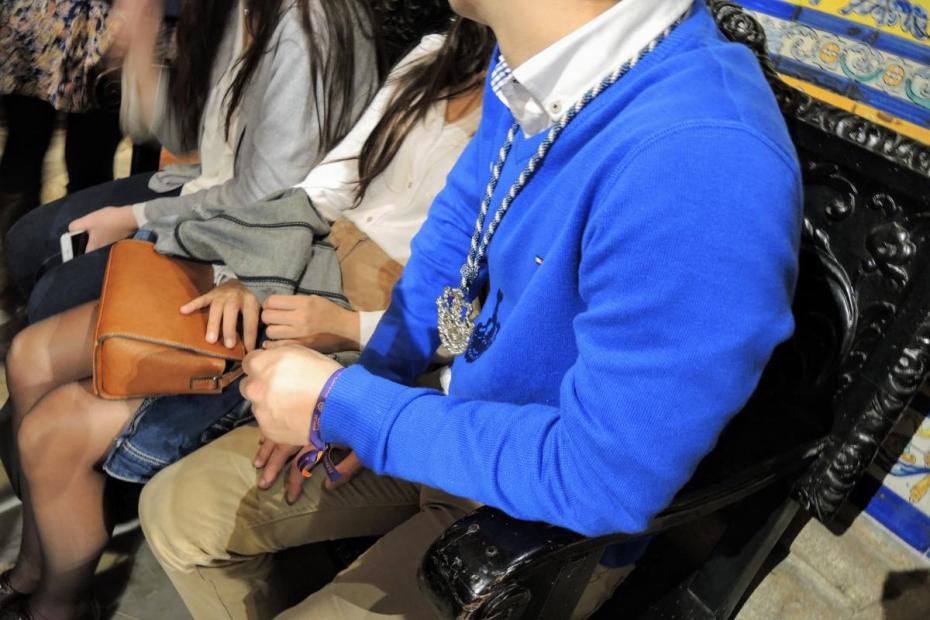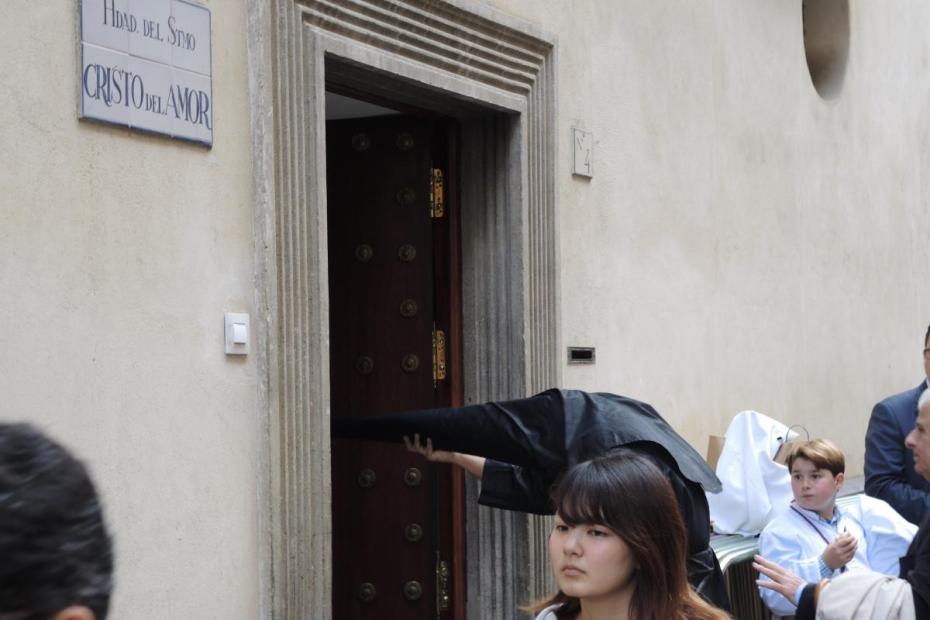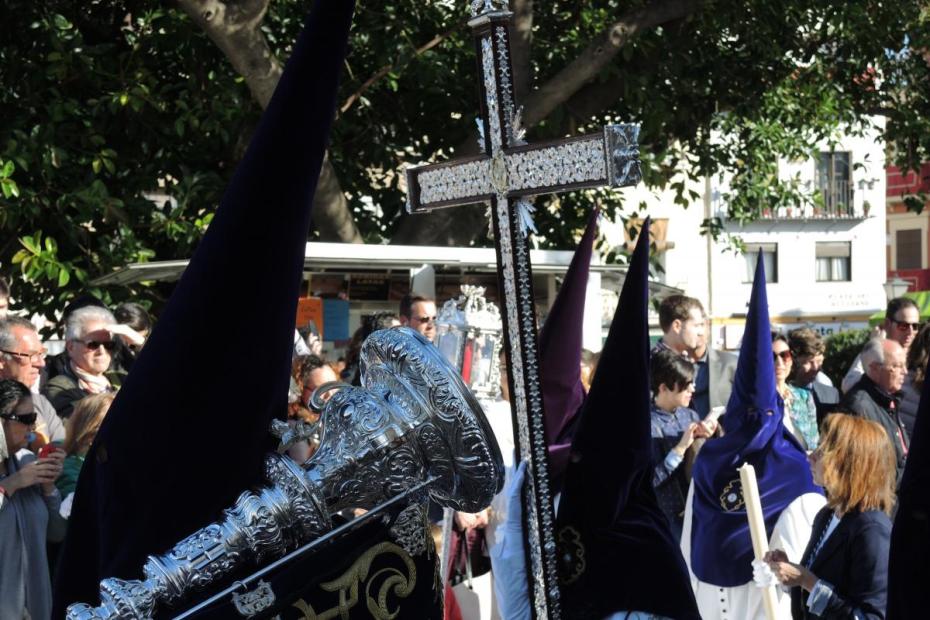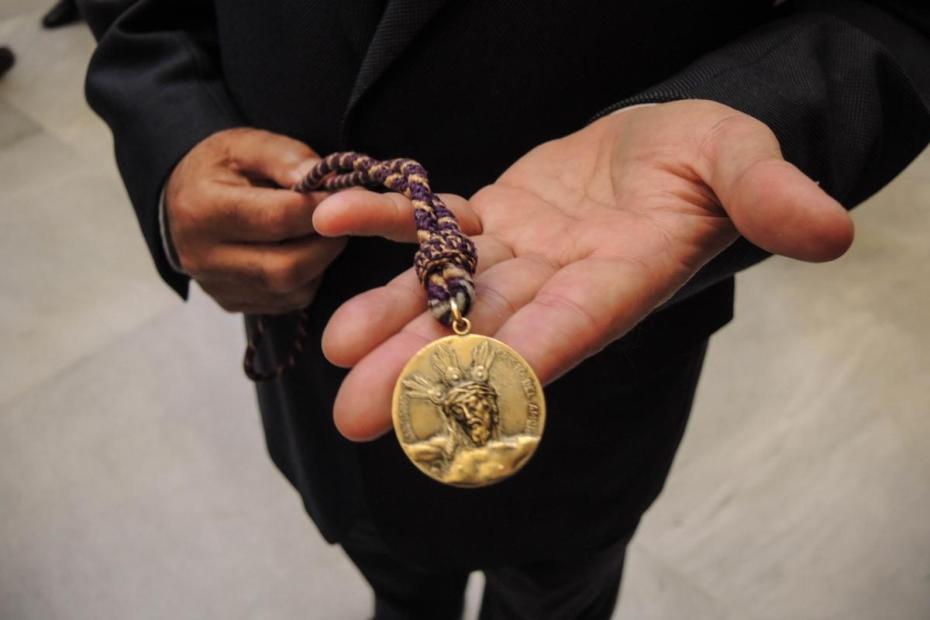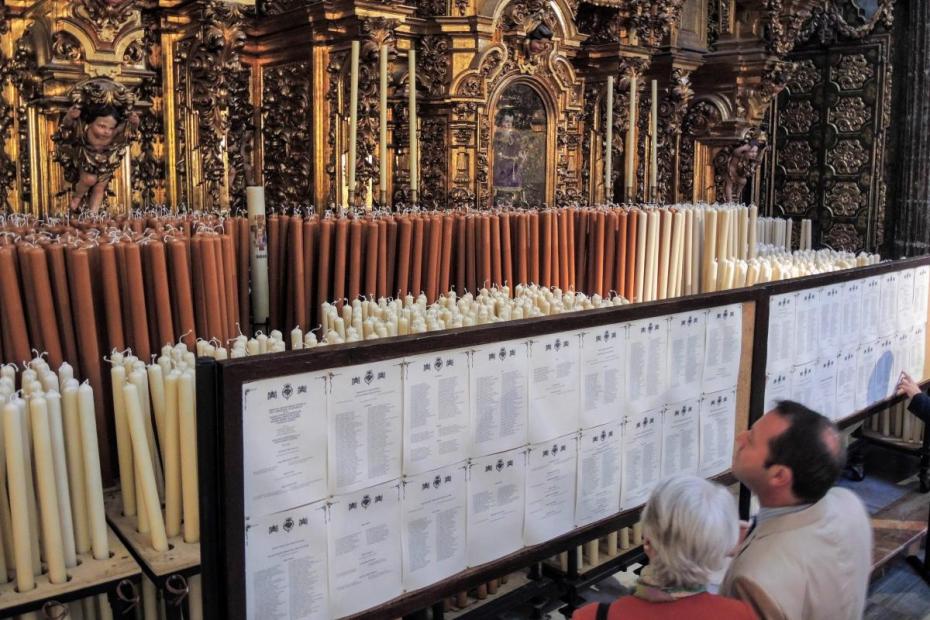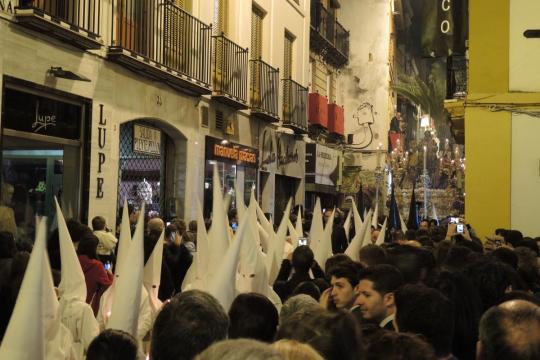“The brotherhood is all year long; the procession is a single day.”
Confraternities are extraordinarily important in the life of the Church in Seville. There are nearly 600 canonically recognized confraternities and brotherhoods in the Diocese of Seville. Seventy-three of these are Penitential confraternities that process in the city of Seville during Holy Week, or in the days before it. One confraternity leader claimed that one-fifth of the population of Seville belonged to a confraternity.1 The confraternities are canonically governed under broad regulations established by the archbishop, in consultation with the confraternities. Confraternity leaders are elected by their members for four-year terms. The Council General of Brotherhoods and Confraternities of Seville is delegated by the archbishop with the responsibility for organizing Holy Week processions.
The Penitential brotherhoods and confraternities are always known by a shorthand name, though each has a longer, very formal title, often deriving from the fact that confraternities have merged over time. The full title of the Lanzada (lance) brotherhood, for example, is Imperial, Antigua, Ilustre y Fervorosa Hermandad del Santísimo Sacramento, Inmaculada Concepción de Nuestra Señora, Santa Espina de la Corona de Nuestro Señor Jesucristo, Ánimas Benditas del Purgatorio, San Martín de Tours Obispo, Nuestra Señora de la Esperanza Divina Enfermera y Real Archicofradía de Nazarenos de la Sagrada Lanzada de Nuestros Señor Jesucristo, Nuestra Señora de Guía, San Juan Evangelista y María Santísima del Buen Fin. In English, “Imperial, Ancient, Illustrious and Fervent Brotherhood of the Blessed Sacrament, Immaculate Conception of Our Lady, Holy Thorns of the Crown of Our Lord Jesus Christ, Blessed Souls in Purgatory, Bishop St. Martin of Tours, Our Lady Hope Divine Nurse and Royal Confraternity of Nazarenes of the Holy Lance-piercing of Our Lord Jesus Christ, Our Lady of Guidance, St. John the Evangelist and Most Holy Mary of the Good Death.”
The shorter, common titles often refer to what is depicted on the paso, or procession float, as in La Lanzada, or La Borriquita (the little burro) for the burro that Jesus rides in on the entry to Jerusalem. El Sol, “the Sun,” has an image of Mary known as the Virgin of the Sun. Perhaps most surprising is El Cachorro, “the puppy,” a reference to the suffering face of Jesus on its processional crucifix, which is said to have been sculpted to model the face of a gypsy man known as El Cachorro, as he was writhing in pain after a stabbing.
The confraternities are thought to have been a fixture of Sevillian life since the 14th century, but the history is sketchy until the late 16th century. Originally the confraternities were formed to unite men with a shared occupation or racial status, to give them a common religious purpose. Los Negritos was, until the 19th century, open only to black men; Los Gitanos were gypsies. Brotherhoods were for men from many sectors of society drawn together for a charitable purpose — El Amor was founded to care for people in jail, to bring them food and spiritual care — and/or for a devotional purpose. Newer confraternities have often been founded in schools or parishes. The Brotherhood of Pino Montado was founded in a public school in the 1980s, and eventually moved to a parish and gained its own chapel.
Today, however, there is no canonical distinction between a confraternity and a brotherhood.2 The occupational or racial origins of the groups appear now to be only a matter of history, and the confraternities welcome people from all backgrounds, including women, though the leadership tends overwhelmingly to be male. One confraternity leader reported, “Our confraternity includes women for six years now. It was a difficult decision at first. We were up against lots of machista (male chauvinism), but the decision ultimately was easy. We are in modern times. We are open to changes and are not immobile.”
Members must be Catholic, but beyond that every confraternity member and leader reported that they are very easy to join, even, as sometimes happens, for people from other cities or countries. At least in Seville, as one leader said, to join is straightforward: “You must be Catholic, and sign up. That’s it.”
Many members described their participation as a family tradition, and family loyalty to a particular brotherhood is often very important, the way loyalty to a particular sports team is in many families. Members said they bring their children and hope that the children will join that confraternity as adults, though in adulthood it is that family member’s decision whether to stay with it. In the processions it is easy to see how intergenerational the confraternities are, from little children to adults, though older family members may no longer be able to walk with confraternities that have processions of 8-13 hours.
The confraternities are governed by regulations, but these were described as being about collective order and procedure, not about charisms or the cultivation of specific individual virtues beyond those expected of any good Christian. A leader of another confraternity said that in the absence of a huge scandal, it wasn’t the confraternity’s job to police behavior. “Catholics know how they should behave. That’s up to your own conscience.”3
Occasionally there have been scandals that have led to expulsions, but these are rare and traumatic for the members if they happen. Members said that divorced and remarried or openly gay members are not expelled, but would likely not achieve high positions in the organization.
Throughout the year, the confraternities sponsor a whole range of activities and meetings. Confraternity members often spoke of “living the brotherhood,” signaling that membership entailed not only participating in the processions, but also being involved in the charitable work of the confraternity, and, if possible, the communal life of masses and dinners.
Members and leaders alluded to occasional difficult interpersonal challenges within the confraternities. They were hesitant to specify examples, but suggested that there were often rivalries over positions and ranking within and between confraternities — a situation that they found dispiriting, but not damning. Traditionally there were even some rivalries between confraternities from each side of the river. The images, styles, music and steps of Triana held up against the styles and priority given to the Virgin of Macarena on the main side. But one woman compared this simply to the competitiveness of football (soccer) teams.
Serving many purposes
A number of interviewees referred to “living” the brotherhood. Asked what that means, one respondent summarized it this way: “A lot of work every week. They have prayer, they have meetings, they collect money. They decide where this money is going to go. They try to teach the new generation to not lose the tradition of the brotherhood.”
Another said, “We have a life year round, together, though it becomes much more intense leading up to Holy Week.”
Many meet for Mass one night each week and often eat together. On the day of the procession, they meet for Mass as well, and then open the church to welcome crowds of visitors who want to see them and the pasos of Jesus and Mary that will process that night.
As may be true in most religious organizations, members belong for different, or perhaps more often, differently layered reasons. One interviewee suggested that 70% of members still joined a confraternity because it is their family tradition. Beyond this, the core religious purposes varied among interviewees.
One interviewee said that in his confraternity (and, he felt confident, in others as well) a primary purpose of membership was to provide catechesis and a religious structure of belonging for families, and that the penitential aspect was subordinate to that, below worship and charity. Another emphasized that bringing the group together as genuine brothers is especially important.
Another interviewee lamented, “The root of the brotherhood originally was penitence and remembrance of the suffering of Jesus, and charity has taken over.”
Many others, while not denying the penitential aspect, were quick to point out that charity was extremely important to them, or even celebrated what the other interviewee lamented. This may be a response to critiques that the confraternities overemphasize ornate processional pasos, embroidery, jewelry on the statue of the Virgin, and other ritual symbols, but he pointed out that of his confraternity’s annual €400,000 budget, half of the funds are dedicated to charity.
The purpose of its charity in the confraternities can change from year to year and is decided at regular meetings. Some have traditional priorities, like care for prisoners and their families or support of hospitals, but even these adjusted during the financial crisis of the last decade to help families with no money for food, rent, etc.
Brotherhood leaders said that rather than simply substituting for other forms of Catholic participation, such as parish life, they were convinced that the brotherhoods play a significant role in fostering a much stronger sense of Catholic identity in Seville and in keeping more people involved in the church.
One confraternity’s leader described the processions not only as an act of penitence, but as an act of catechism. By bringing the images — each of which tells a facet of the Passion story — to the streets, they were doing their part to share the gospel and to educate everyone, not just those who come into the churches.
“This is popular religion,” he said. Asked if the phrase “popular religion” meant something distinctive from or subordinate to sacramental church practices, he said “No. This is the same thing. We make religion popular.”
- 1The discussion that follows is based primarily on interviews with leaders and members of four confraternities, along with dozens of informal conversations on the street and in the chapels during Holy Week 2016. Special thanks to Maria Teresa Dolado-Martin for translation assistance.
- 2Because of this, the entries here tend to use the words “confraternity” and “brotherhood” as interchangeable.
- 3A confraternity member in the smaller city of Ronda, 130km away, took a different attitude, and spoke of removing a member who divorced his wife and entered a same-sex remarriage. It is difficult to know whether this was due to cultural, big city/smaller town differences, or whether there are other confraternities in Seville that take the same attitude, but confraternity leaders in Seville said that it would take a major public scandal for them to intervene.
